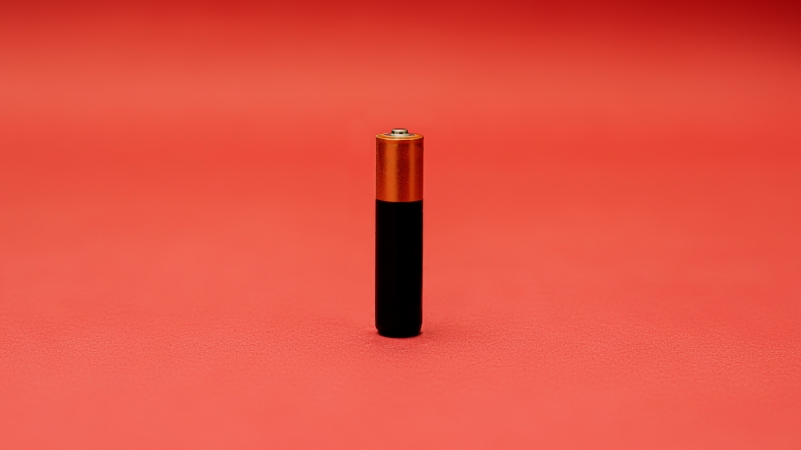
Best Doggie Doorbell:15+ Models Tested for Potty Training
Are you training your doggie doorbell manners, or does your furry friend incessantly scratch or bark at the door to go outside? You need a

Have you ever wondered how to enhance your furry friend’s mode of communication?
Imagine a world where your dog can signal you whenever they want to go outside or come back in, without resorting to barking or scratching the door. That’s the magic of a smart dog doorbell.
This innovative device not only fosters a unique bond between you and your pet but also introduces a fun, tech-savvy element to your home.
This comprehensive guide will take you on an exciting journey to create your very own dog doorbell, transforming an ordinary day into an extraordinary DIY adventure.
Your journey to create a customized dog doorbell begins with understanding its advantages.

It’s not merely an entertaining gadget; it’s a functional tool that empowers your pet to communicate effectively while enhancing your understanding of their needs.
A smart dog doorbell offers several advantages that make it a worthwhile DIY project for any pet enthusiast. By installing one, you’ll enjoy benefits such as:
To embark on this project, you’ll need some essential items. These include various types of sensors (such as motion sensors or proximity sensors), batteries, a bell or audio output device, and the brain of the operation – a microcontroller. Each component is user-friendly, and this guide provides detailed instructions on handling them with ease.
Before you begin, it’s essential to gather all the necessary materials and tools for your DIY dog doorbell project. Here’s a list of what you’ll need:
The heart of your DIY project lies in selecting the appropriate sensor. Will a motion sensor be the best fit for your dog, or would a proximity sensor work better? Each option brings unique functionality to your dog doorbell, and this section helps you make the best choice for your furry friend.
When designing your smart dog doorbell, the choice of sensor plays a crucial role in its functionality. Here’s a closer look at the two main sensor options:
Consider your dog’s behavior and habits when deciding which sensor type to use in your dog doorbell project. You want to choose the one that best suits your pet’s needs and preferences.
This section breaks down the assembly process into easy-to-follow steps. You’ll learn how to connect the sensor, power source, and bell, ensuring every connection is secure.
The guide provides detailed illustrations and tips for a hassle-free assembly experience, making it suitable even for those new to DIY electronics.
Now that you have gathered all the required materials and chosen the right sensor for your dog doorbell, it’s time to start assembling the device. Follow these simplified steps to ensure a smooth assembly process:

Here’s where you get to add your personal touch. You’ll have the opportunity to program your dog doorbell, adjusting its response to your dog’s interactions. This section covers basic programming principles, tailored for beginners, with step-by-step instructions to customize the doorbell’s sound, volume, and more.
Programming your smart dog doorbell allows you to customize its features to suit your pet’s specific needs and preferences. Here’s how you can easily program your dog doorbell:
Once your dog doorbell is assembled, it’s crucial to ensure it works as intended. This chapter focuses on how to effectively test the doorbell’s functionality, offering tips for troubleshooting common issues. Whether it’s sensitivity adjustments or connectivity problems, this section ensures your creation operates smoothly.
To ensure your smart dog doorbell functions flawlessly, follow these steps for testing and troubleshooting:
Discovering the optimal location for your dog doorbell and understanding its daily use are key to its success. This section guides you through the best practices for installation and everyday usage, ensuring the doorbell is easily accessible to your pet and functional for your home setup.
Now that your smart dog doorbell is fully functional, it’s time to install it and integrate it into your daily routine. Here’s how to do it effectively:
Regular maintenance is essential for the longevity and effectiveness of your dog’s doorbell. This part of the guide covers routine upkeep, cleaning tips, and exciting upgrades to keep your device up-to-date and functional.
From managing batteries to implementing software updates, you’ll learn how to maintain your doorbell in prime condition.
To keep your smart dog doorbell in top shape, follow these maintenance tips:

Creating your own smart dog doorbell is more than just an enjoyable DIY project; it’s an enriching experience that deepens the bond between you and your pet. It’s a fusion of creativity, technology, and practicality that adds a new interactive dimension to your home.
This project not only enhances your dog’s communication but also brings a sense of accomplishment and joy to your DIY endeavors. So, grab your toolbox, unleash your creativity, and embark on this fulfilling journey. Your pet will express their gratitude, and your home will be all the smarter for it.
Embrace the DIY spirit and let the adventure with your furry friend begin with your very own smart dog doorbell.
It’s a project that promises enjoyment, learning, and a stronger connection with your beloved pet. With the comprehensive knowledge and guidance provided in this guide, you’re well-equipped to create a personalized dog doorbell that will delight both you and your canine companion.


Are you training your doggie doorbell manners, or does your furry friend incessantly scratch or bark at the door to go outside? You need a

When it comes to dog pee, much like humans, the urine of animals is a vital health indicator. Just as human urine reveals a lot

Noticed your dog yawn more often than usual? While it’s adorable, it could also be a sign of something to consider if it appears excessive.

Wondering what’s so fantastic about bell train a dog? Picture a world where your furry friend always alerts you when they need to go outside,

Are you training your doggie doorbell manners, or does your furry friend incessantly scratch or bark at the door to go outside? You need a

When it comes to dog pee, much like humans, the urine of animals is a vital health indicator. Just as human urine reveals a lot

Noticed your dog yawn more often than usual? While it’s adorable, it could also be a sign of something to consider if it appears excessive.

Wondering what’s so fantastic about bell train a dog? Picture a world where your furry friend always alerts you when they need to go outside,
Copyright © 2024 doggydogdoorbell. All Rights Reserved.